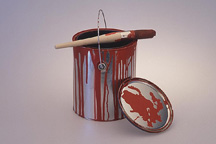I was watching television this morning as our local weather experts shared that we are again having a triple-digit week. In fact, today, is supposed to be a record breaker in the Permian Basin as we break our record of 103 degrees today!
 What’s funny is that humidity in our area is also high…something extremely unusual for the dry West Texas weather.
What’s funny is that humidity in our area is also high…something extremely unusual for the dry West Texas weather.
This blog is designed to present actionable tid-bits that makes your life better, saves you money, brighten your day and delivers valuable info.
When we’re talking “triple digit” weather, I know that lowering your air conditioning cost has to be somewhere on your mind.
The muggy summer heat can make air conditioning a very welcome treat but you could get burned once you see your next electric bill. Living comfortably inside an air conditioned house has its own downside – an increased monthly electrical consumption. You can decrease your air conditioner’s work load – as well as your monthly power bill – by lowering the humidity level in your home which your air conditioner would otherwise do.
The air conditioner’s two-way cooling process
An air conditioning unit delivers comfortably cool air in your home through two processes:
• By lowering the air temperature
• By taking out humidity from the air inside your home. Cold air cannot tolerate high humidity levels, unlike warm air.
Humidity of 30 to 50% level in the air makes it feel more refreshing. During the hot summer months, the air inside your house can carry humidity level of 80% or higher. This causes you to feel uncomfortably hot and sticky. On the other hand, bringing down the humidity level produces cooler air.
Decrease the humidity inside your home
There are several small ways you can bring down the humidity level inside your home. Added up, they can dramatically cut the cost of your electric bill. Here are some cool steps you can use.
• Always keep your doors and windows shut, especially on sweltering hot weather. Keep going in and out of the room at a minimum because humidity comes every time a door is opened.
• Install exhaust fans in “moist” areas of your house like the bathroom, laundry room and kitchen. They will blow humid air outside your home and thus free the air conditioner from doing the job.
• See to it that your clothes dryer vent is directed towards the outside so that any moisture coming from the dryer doesn’t raise the humidity level inside.
• Check all the plumbing inside your house for any drips or leaks. If you find them, repair them at once. Water from the leaks eventually evaporates and can increase the moisture level inside.
• Go outside and check if any water from outdoor is making its way in through your walls. Also ensure that drainpipes and downspouts are directing water away from your house.
• Cook according to the weather you’re having. On hot days, don’t raise the temperature inside your house further by boiling water in the kitchen.
• Take your houseplants out during the summer to decrease the humidity in your home. Plants give off moisture through their leaves and inside your house.
Get a dehumidifier
Home dehumidifiers are sold for just $100 to $300 and perform a terrific job of removing moisture from the air inside. A small dehumidifier can take 10 quarts of water from the air everyday while a bigger model can extract over 25 quarts in a day.
An energy-saving dehumidifier with an Energy Star seal consumes way less electricity than an air conditioning unit.
Lowering the level of humidity inside your home is no assurance that you won’t need to use your air conditioner again. If you do turn it on, there’s still one thing you can be sure of. Lower the level of humidity inside your house and your electrical bills will follow suit.
Article Source: http://EzineArticles.com/?expert=Benedict_Yossarian
Filed under: Home Care Tips | Tagged: caren mccourt, mccourt real estate, mccourt realtors, midland realtor, midland texas, real estate midland texas | Leave a comment »



 Some have “swooped in” for the kill and are gouging the heck out of local people asking stinky things like “let me see what insurance will cover and THEN we’ll provide you what our estimate of what the repair will be”. Or, one of the most common comments has been, “what’s your deductible? Well, we want you to pay that to a check to us first because we know the repair will be over that. Youll just have to duke the rest our with your insurance company”. It’s sad for everyone involved when these opportunistic price gougers descend upon your city.
Some have “swooped in” for the kill and are gouging the heck out of local people asking stinky things like “let me see what insurance will cover and THEN we’ll provide you what our estimate of what the repair will be”. Or, one of the most common comments has been, “what’s your deductible? Well, we want you to pay that to a check to us first because we know the repair will be over that. Youll just have to duke the rest our with your insurance company”. It’s sad for everyone involved when these opportunistic price gougers descend upon your city.


